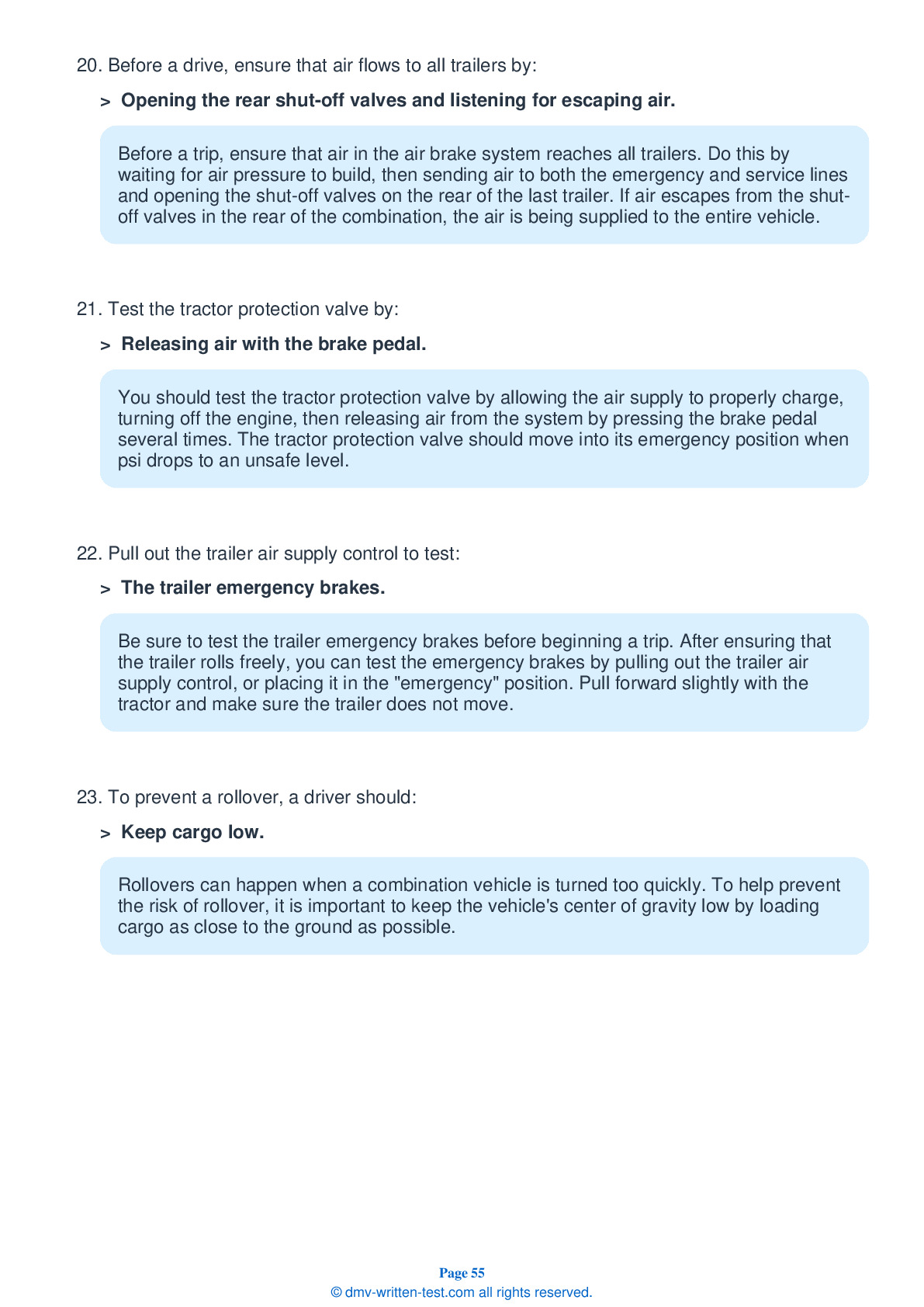Air Brakes
This endorsement is required for driving a vehicle with air brakes. To receive this endorsement, applicants must pass a written test. The test consists of 25 multiple choice questions. Each question has two, three or four possible answer choices. To pass, the applicant must answer at least 20 questions correctly. Test questions come from the Minnesota Commercial Driver’s Manual. Questions come from the chapters covering: Air Brakes and Combination Vehicles. The Air Brakes endorsement may be used with the Class A, B or C CDL.
Number of Question
Passing Score
13. What happens if the air pressure in a system's air tanks falls below 60 psi?
Explanation
In an air brake system, a low pressure warning signal should activate if the pressure in the air tanks falls to a level below 60 psi. This signal may be in the form of a warning light or a wig wag.
14. Combination vehicles:
Explanation
Driving combination vehicles requires more skill than driving single commercial vehicles. Combinations are generally longer, generally heavier, and are more vulnerable to rollover.
15. What is another name for the service line?
Explanation
The trailer service air line is also referred to as the control line or signal line.
16. Applying the brake pedal causes air pressure to activate an electric switch and:
Explanation
In a vehicle with air brakes, the brake lights are activated when the brake pedal is pushed and air pressure moves an electric switch. With the application of air pressure, the switch will then turn on the brake lights.
17. Operating a combination vehicle usually requires ____ operating a single vehicle.
Explanation
Combination vehicles require more skill to drive than single vehicles. Combination vehicles are usually longer and heavier, and are more vulnerable to rollovers.
18. To help prevent a rollover, cargo should be:
Explanation




